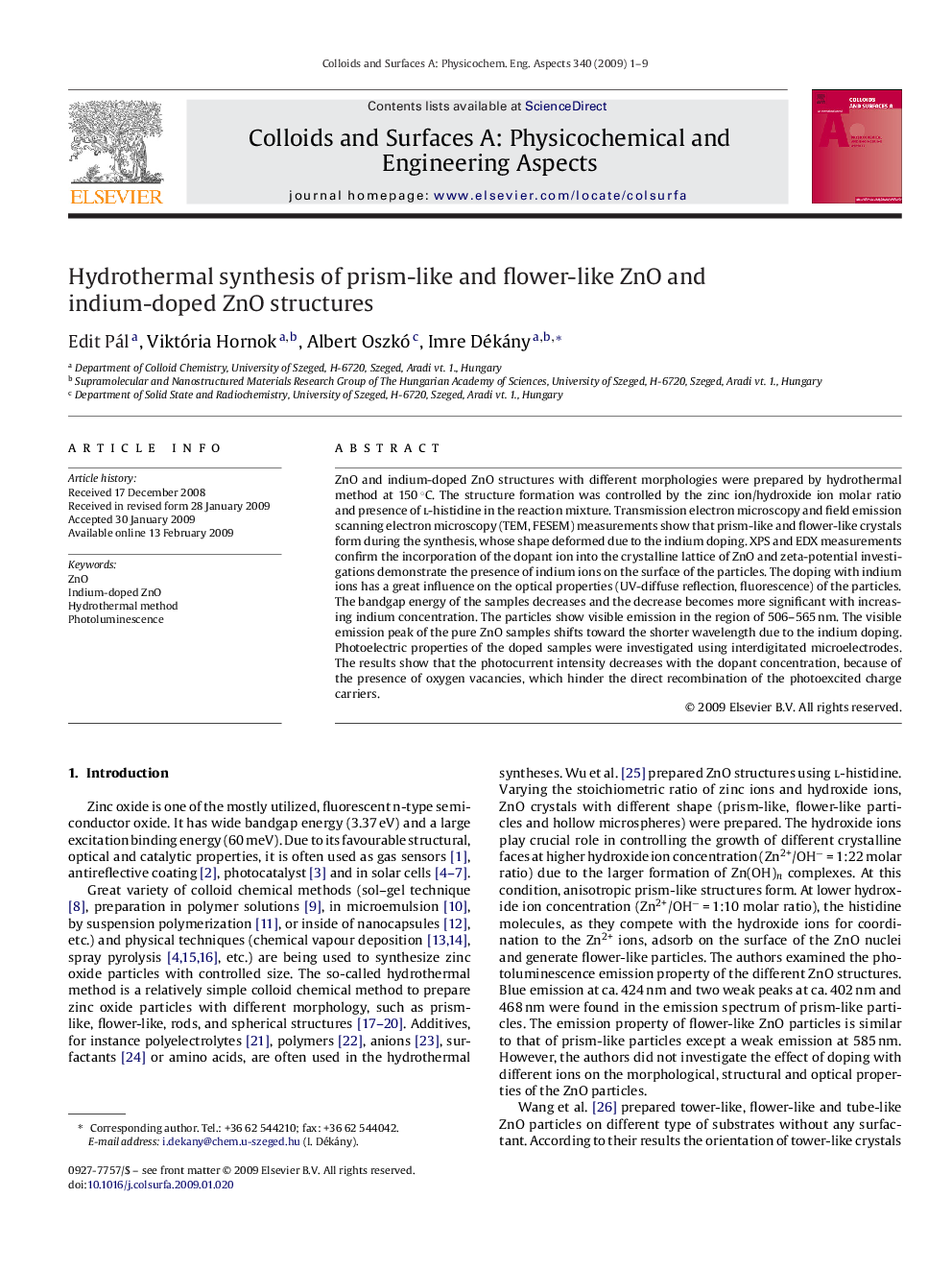| Article ID | Journal | Published Year | Pages | File Type |
|---|---|---|---|---|
| 595997 | Colloids and Surfaces A: Physicochemical and Engineering Aspects | 2009 | 9 Pages |
Abstract
ZnO and indium-doped ZnO structures with different morphologies were prepared by hydrothermal method at 150 °C. The structure formation was controlled by the zinc ion/hydroxide ion molar ratio and presence of l-histidine in the reaction mixture. Transmission electron microscopy and field emission scanning electron microscopy (TEM, FESEM) measurements show that prism-like and flower-like crystals form during the synthesis, whose shape deformed due to the indium doping. XPS and EDX measurements confirm the incorporation of the dopant ion into the crystalline lattice of ZnO and zeta-potential investigations demonstrate the presence of indium ions on the surface of the particles. The doping with indium ions has a great influence on the optical properties (UV-diffuse reflection, fluorescence) of the particles. The bandgap energy of the samples decreases and the decrease becomes more significant with increasing indium concentration. The particles show visible emission in the region of 506-565 nm. The visible emission peak of the pure ZnO samples shifts toward the shorter wavelength due to the indium doping. Photoelectric properties of the doped samples were investigated using interdigitated microelectrodes. The results show that the photocurrent intensity decreases with the dopant concentration, because of the presence of oxygen vacancies, which hinder the direct recombination of the photoexcited charge carriers.
Related Topics
Physical Sciences and Engineering
Chemical Engineering
Colloid and Surface Chemistry
Authors
Edit Pál, Viktória Hornok, Albert Oszkó, Imre Dékány,
